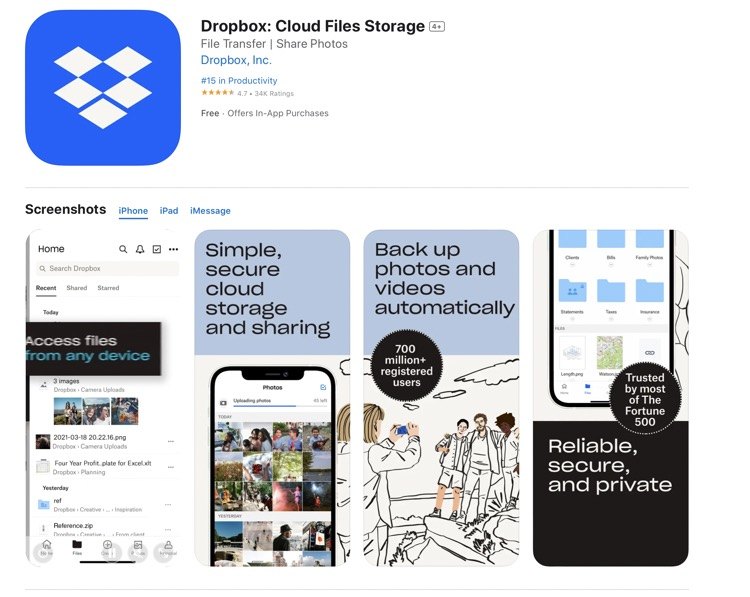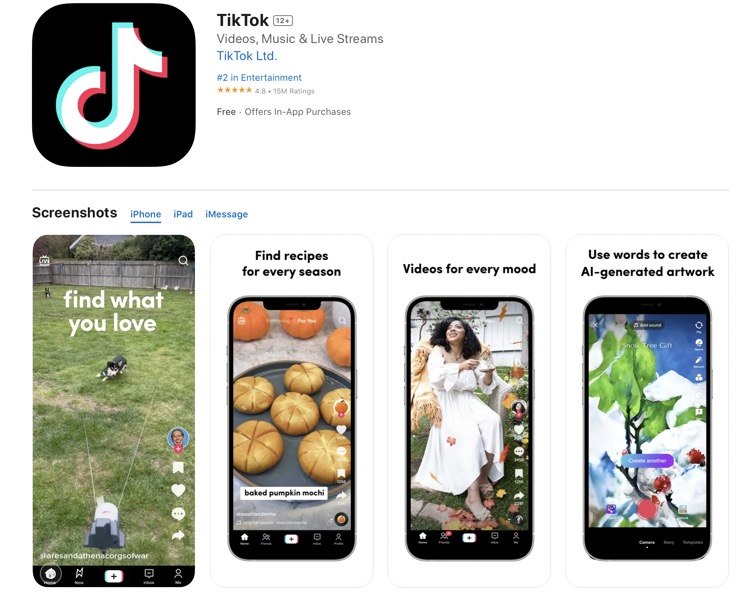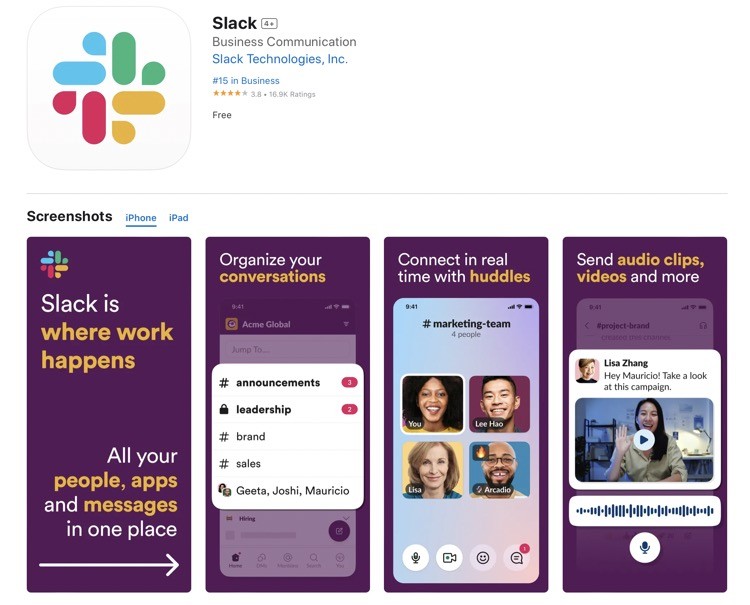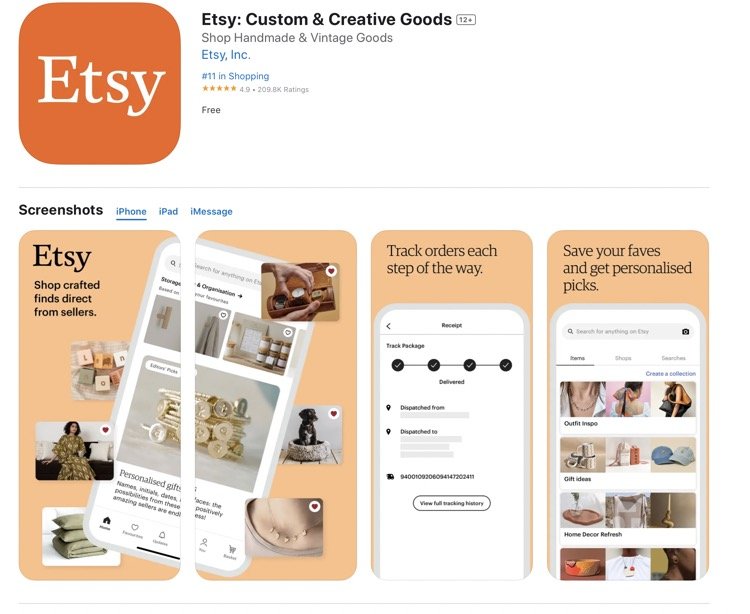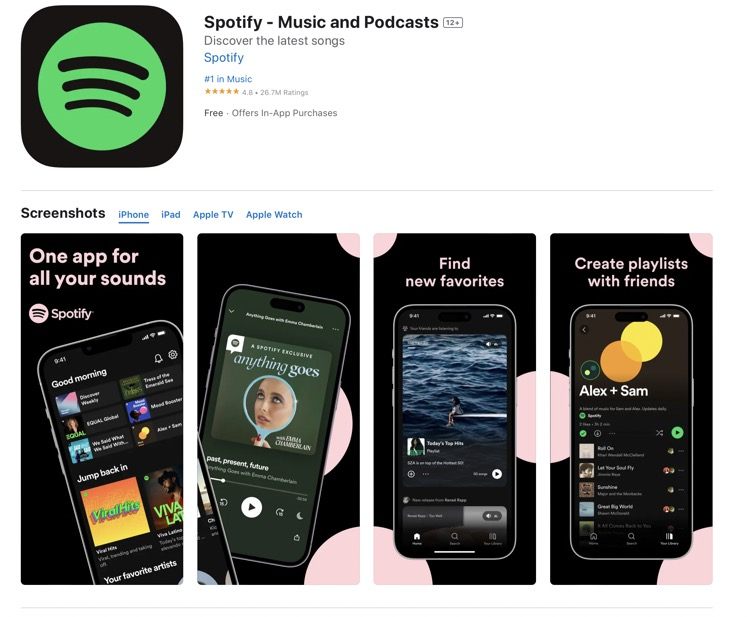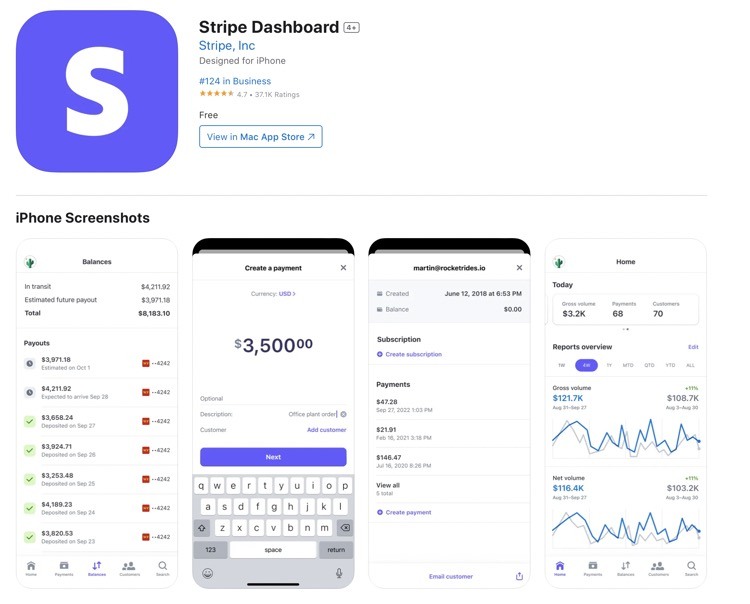Across all markets and geographies where mobile apps have become one of the economy staples, the question of a mobile app’s growth is an existential one. It’s either you manage to sustain the app’s growth month after month or you go sidelines of the app industry being beat by your competitors. Hence growth marketing is what app marketers doing their best to master and we believe providing case studies will be beneficial for you to analyze what you can do for your mobile app project to secure its growth.
Featured Growth Marketing Agencies
Case Study #1 Airbnb
Today, when you think about traveling and planning a place to stay on your trip, Airbnb pops up in your mind every time as one of the options you consider. The company established itself as an easy-to-use, flexible, safe hospitality provider for tens of millions of people around the globe. Of course, it had its own ups and downs, particularly when COVID-19 hit in 2020, it was struck really badly but it managed to stay afloat and move forward. In this article, I’d like to begin with Airbnb because it’s one of the Silicon Valley’s companies where the top management not only trying to meet their financial bottom line but doing their best to do the right thing for the society, given their scale and impact globally.
Airbnb iOS app listing on the App Store

Source: the App Store
Growth Marketing campaign objective
The story of Airbnb began back in 2007 when Brian Chesky and Joe Gebbia (co-founders of Airbnb) after looking for a place to rent in San Francisco, saw the potential in the idea of essentially renting an air mattress as a bed and breakfast for people to rent. So the objective of their growth marketing campaign was to find a way to scale up this brilliant but hardly scaleable idea.
Fuel Your Business, Ignite Your Growth!
Join leading brands like Google, Reddit, and Uber in taking the next step towards success using Moburst, and spark enthusiasm for your product among users!
Claim Your FREE Review NowSolution
At the very beginning of its path on the market, when none of raised by 2022 $6.4 billion in funding over 19 rounds was available, the founders – Brian Chesky, Joe Gebbia, and Nathan Blecharczyk had to be really innovative to raise the capital needed for the company to take off. The first $30k was raised essentially by making the platform a part of the US Presidential elections, the company sold cereals branded for Democratic and Republican nominees.
To find the first pool of users for the platform, Brian and his team turned to Craiglist – Airbnb’s users could post ads for their rentals on the popular classified ads platform, which wasn’t actually what Craiglist allowed to do. Back then, circa 2010, Craiglist already had a big pool of users who were placing ads offering their place to rent or looking forward to the one to rent.
The other growth pain to overcome was the poor-quality photos of properties people were offering to rent, to fix it Airbnb’s team began to photograph listed rents using an HQ camera, by now the company employs 2,000 freelance photographers.
Yet another obstacle on the company’s path to growth was people’s fear to let somebody live in their apartments and houses. The introduction of social integration into the platform allowed to mitigate this fear, when people could see previous tenets’ reviews.
And the final piece of Airbnb’s growth to mention – is the referral program that allows its users to share it with their friends and family.
Results
Airbnb has grown to a hospitality platform with a revenue of $8.4 billion (as of 2022), 6.8k employees, 4 million hosts, and 800 million guest arrivals. A combination of a positive personal experience and an easy-to-use referral program led to millions of new users signing up for the platform.
Turning to another superstar in the world of mobile apps and digital platforms used by tens of millions of people around the globe. Let’s see how the world-famous file-sharing platform Dropbox became the absolute leader of the space and what was its growth story.
Case Study #2 Dropbox
When it comes to file sharing, Dropbox is the absolute leader with 17.4 million paying users and $573 million in revenue (Q2, 2022). At one point Apple was trying to buy the company but its team preferred to stay independent and now continues to be the file-sharing platform that connects people using various desktop and mobile operating systems for their computers and mobile devices.
Dropbox iOS app listing on the App Store
Source: App Store
Growth Marketing campaign objective
To understand Dropbox’s objective at the beginning of its growth on the market, I need to describe briefly the Internet of 2008, the year the app was launched. An average download and upload speed was an order of magnitude less than today and all solutions for online file-syncing were strictly B2B oriented. Dropbox had to convince people that safe and quick online file-sharing is actually what is available to them and not just big corporations.
Solution
It’s interesting to note that to achieve that phenomenal growth that today people refer to when they need an example of hyper-growth, Dropbox spent zero on advertising. Dropbox’s team launched a referral program that allowed users to suggest the platform to other people and as a reward, they got more disk space to store and share more content.
Back in 2008 and for a number of years later, disk space was the most valuable asset to reward people with for helping the platform grow. The basic plan offered by Dropbox provided only 5 Gb of disk space, to get more users had to pay and so there was a really strong incentive for people to find somebody to share the service and get rewarded with more free disk space through the referral program.
Results
Three years after its launch, in 2011 Dropbox could manage to generate $100 million in revenue.
Switching from the file-sharing service that people refer to as the easiest and fastest way to share files to a short-form video world champion of today – TikTok.
Case Study #3 TikTok
A short-form video hosting service owned by ByteDance, TikTok is one of the leading media platforms of today, on par with Instagram and YouTube. Since 2016 the platform grew to a giant with $13 billion in revenue in 2023 and 843 million monthly active users. The story of its phenomenal growth has multiple components I’m going to lay out further, focusing on major contributors.
TikTok iOS app listing on the App Store
Source: App Store
Growth Marketing campaign objective
Aside from many remarkable marketing feats that are attributed to TikTok, the one that stands out and was the major objective for the China-based owner of the app ByteDance – to succeed in the US market, outside China, to this day TikTok is one of the very few that succeeded in pursuing this objective. Many Chinese companies have been trying to succeed in North America and Europe but mostly due to cultural differences failed to do so.
Solution
Influencers, and specifically top influencers with massive fellowship on TikTok’s major competitive social media platforms such as – and still are – YouTube and Instagram were targeted as TikTok’s brand ambassadors to break into the US and European market. TikTok spent big budgets on tapping these two biggest media platforms’ potential to introduce the app to the masses in a short period of time. During the massive influencer marketing campaign, Youtube and Instagram influencers created lots of videos with the TikTok app and shared it on their YouTube and Instagram channels.
Creating viral challenges helped the app’s team to build a buzz around the app and drive user acquisition.
Yet another piece of TikTok’s spectacular success was the app itself. The company focused on short-form engaging videos, the content was analyzed via sophisticated algorithms to identify specific subjects that were triggering people’s interest to suggest more of it.
Results
TikTok’s team managed to grow the app’s user base to the first billion users in two years, it’s accessible in 150 countries and in 75 languages, and it’s the 6th most-used social platform in the world. In 2021, it was the most downloaded app with 600 million downloads. The app is most popular with females (57%) and on average its users spend an hour in the app daily.
Switching the gears, from the most popular short-form video-sharing platform on the planet to the B2B app that is crucial for the operations of so many businesses around the globe – Slack app.
Case Study #4 Slack
Launched in August 2013, the instant messaging platform for business has effectively replaced email as a business environment to work on projects, communication between employees, and more.
Slack iOS app listing on the App Store
Source: App Store
Growth Marketing campaign objective
The uniqueness of Slack’s growth story is that, at the time when its founder Stewart Butterfield was launching the app, there wasn’t such a software category as business communication. Businesses struggled with running projects in email and just didn’t know that the solution was coming. The real objective for the app’s growth campaign was to raise awareness, to show businesses and non-profits that there was a better way.
Solution
The solution that Slack’s team came up with included word-of-mouth marketing, accelerating its growth via integrations, and listening very carefully to customer feedback.
The crown jewel of the Slack app was its channels that allowed to keep various topics discussed by business or academic teams separately, making it really simple to manage it and make real progress. The feature was so powerful that the app’s early adopters were really impressed, leveraging that the Slack team built in the feature for Slack users to share the app with their friends and colleagues easily. And this unleashed the power of word-of-mouth to make Slack really popular really fast.
One of the things that teams that develop new apps for collaboration have to address early, and Slack was a great example of that, was integration with other apps. In most cases, business teams use multiple apps to run projects, and integration between these apps is what makes their business run smoothly. Also, these integrations introduced the app to other popular app communities such as Google Drive, Trello, and Dropbox.
No V1 of a mobile app is perfect and the Slack app wasn’t an exception, plus along the way, the team made tweaks that weren’t always welcomed by its user base. Slack has been a very good listener to their users and quickly adjusts the app to address people’s problems with the app.
Results
Today 18 million people use the app daily in 156k organizations around the globe, which generated for the company $902 million of revenue in 2021. For business communication, the app has become what Google became for search or YouTube for video sharing. In December 2020, Slack was acquired by Salesforce for about $28 billion.
Now, let’s move away from B2B apps and turn to the world of one of the most female-beloved apps – Etsy.
Case Study #5 Etsy
Launched 18 years ago, Etsy is a US e-commerce company with a focus on handmade or vintage items and crafts to buy. For many people, the platform has become either an extra income source or sometimes even the prime one.
Etsy iOS app listing on the App Store
Source: App Store
Growth Marketing campaign objective
Etsy occupies a unique niche being the biggest marketplace for handmade products on the planet. The success of the Etsy platform is deeply connected with the success of its sellers, from very early on the Etsy team was focused on helping their sellers to sell more and meet their bottom line.
Solution
To facilitate this objective, Etsy made it easy for sellers to share their Etsy shops on social media. In particular, Pinterest was really instrumental for the sellers, thanks to its focus on visuals and a great appeal for women.
Also, the Etsy team has always been on a mission to build the platform as a place for various individuals and communities to be creative and be rewarded for that.
Results
As of Q2, 2021, Etsy had 4.7 million active sellers and 90.7 million people who check the app daily.
From the world of homemade crafts, people pour their love into and generate extra income, to the world of music with the app that has become a synonym of music streaming – Spotify.
Case Study #6 Spotify
Launched in 2006, Spotify was conceived as a legal music streaming platform at a time when music piracy was still in full swing and Apple’s iTunes, based on a tune-purchasing model, was still fairly new. Sweden-based Spotify’s founders Daniel Ek and Martin Lorentzon believed that was the answer to combat piracy.
Spotify iOS app listing on the App Store
Source: App Store
Growth Marketing campaign objective
Similar to Slack, Spotify’s team was a group of pioneers of the music streaming field that was later adopted by Apple and today in 2023 considered by everybody to be a default for the music business. Back in 2006, everything about the Spotify app’s growth was a challenge, starting with convincing music labels that streaming tunes was a good idea and that it will beneficial for all parties.
Solution
On top of the company’s efforts to convince music labels about the platform’s potential was utilizing the ad-supported model to offer the music streaming service for free and attract people who weren’t ok to pay for subscription services.
Also, Spotify’s team has always been focused on the app’s user experience, carefully listening to their complaints and suggestions, the team has been perfecting the app year-over-year.
Results
Today 433 million people around the world listen to music on Spotify on a monthly basis and 188 million of those are active users. Unfortunately, the platform has never become profitable but as of 2022, it generated €11.72 billion in revenue.
And finally, we’re switching from the top music streaming app on the planet to one of the most successful mobile payment processors – Stripe.
Case Study #7 Stripe
In 2011 two brothers Patrick and John Collison from rural Ireland got the idea that they could make online payment processing a breeze and help lots of businesses to streamline their payments.
Stripe iOS app listing on the App Store
Source: App Store
Growth Marketing campaign objective
Hands down, back in 2011 the major objective for Stripe as a nascent company was to compete with such online payment processing companies as PayPal and Square that by the time of Stripe’s launch, was only two years on the market.
Solution
To take on such well-established players as PayPal and Square, Stripe’s team partnered with many prominent companies such as Xero, Dropbox, Mailchimp, Ramp, DocuSign, and Intercom to integrate their payment processing processor to these platforms and reach out to a wide audience of users on those platforms.
Developing API for developers to integrate Stripe into their apps was another solution to reach the company’s growth objective in the market dominated by PayPal and Square.
Results
By 2022 Stripe became one of the highest-valued privately owned businesses in the US, valued at $95 billion, with about 7,000 employees worldwide, to name just a few the payment-processing platform is being used by Amazon, Google, Lyft, and Uber.
Final Thoughts
So here I presented only the seven case studies highlighting what marketing teams of these popular apps did right to allow these apps to grow quickly and sustainably. One common thread throughout all these cases is that partnerships with established companies, launching an easy-to-use referral program, and listening to your user base very carefully are the major components of these apps’ growth.
Good luck with your app’s growth marketing efforts!



